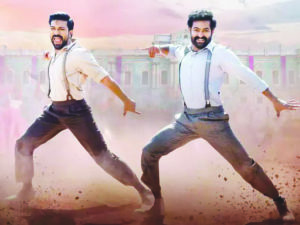At the 95th Academy Awards, Daniel Scheinert and Daniel Kwan’s Everything Everywhere All at Once took home wins in acting, editing and directing categories, and also won the coveted best picture award.
The quirky and expansive sci-fi action film is famed for its absurdist take on the idea of a multiverse, yet it is still grounded in realness and humanity: In one masterfully choreographed scene in Everything Everywhere, three languages are spoken by three generations of one chaotic immigrant family over dinner.
 It is interesting how screenwriters and directors use language in film to do much more than just convey dialogue: Language and subtitles also provide characterization, establish the tone of a scene and ground fictional stories in reality.
It is interesting how screenwriters and directors use language in film to do much more than just convey dialogue: Language and subtitles also provide characterization, establish the tone of a scene and ground fictional stories in reality.
Increasing use of non-English languages and subtitles demonstrates both a trend toward linguistic realism in Hollywood and also broader acceptance of linguistic diversity in a globalized society.
But filmmakers must negotiate the tension between narrative goals and audience engagement. By examining different ideologies held by filmmakers and audiences alike, we can also still sometimes find long-standing associations between foreign language and villainy.
Languages breaking through
As South Korean filmmaker Bong Joon-ho described in his Golden Globes acceptance speech for 2019’s Parasite, when audiences move past the “one-inch tall barrier of subtitles” a richer world of film awaits.
Telling authentic stories in a modern, globalized and multicultural world means fairly portraying the languages spoken and signed all throughout our society. Hence, at times, the need for subtitles.
In another scene in Everything Everywhere, spoken language is eschewed altogether: Two rocks converse silently while gazing over a barren canyon, with black and white subtitles appearing on a bright blue sky. This simple yet emotionally resonant scene was somehow enough to move many viewers to tears.
Although Todd Field’s Tár did not clinch any Oscar wins this year, star Cate Blanchett notched multiple other acting awards for her role as the titular orchestra conductor. In some of the film’s best scenes, the maestro uses only German during orchestra rehearsals and subtitles are dropped completely.
Non-Germanophone audiences might not understand the words Blanchett says, but they are instead encouraged to focus on the visual aspects of the character’s communication: her facial expressions, physical tics and tremors and the building tension, both visible and audible, between her ego and everyone around her.
The Oscar performance of Naatu Naatu, from the Indian Telugu-language blockbuster RRR, which received a standing ovation, was evidence that performances can cross language boundaries by leaning into creative elements far beyond words.
Two sides of language
representation
The flip side of positive aspects of linguistic representation is that filmmakers, free to use the tool of multilingualism to provide characterization and establish tone, and even to showcase threatened languages, are also free to use it to entrench certain linguistic stereotypes, namely the association between foreignness and villainy.
The warriors of the underwater Talokan kingdom in Ryan Coogler’s Black Panther: Wakanda Forever never speak a word of English. In this Marvel Cinematic Universe story, the fictional kingdom of Atlantis was repositioned as a Mesoamerican-inspired society.
The language of Talokan is the real-world language of Yucatec Maya, spoken by Indigenous people in present-day Guatemala, Belize and southern Mexico.
Sharing an Indigenous language
Yucatec Maya is stigmatized and marginalised in the geographic areas where it is traditionally spoken, one of the long-lasting consequences of colonization.
But Coogler’s creative decision to use Yucatec Maya as the language of Talokan, as well as to borrow heavily from Mayan and Aztec cultures for visual inspiration, has delighted some Maya-speaking Indigenous moviegoers who say they saw their culture represented and are happy to see the language widely shared.
Two strong minor characters, Namora and Attuma, speak only in Yucatec Maya throughout the entire movie, with English subtitles in an elegant blue script.
Archetypes of antagonism?
Yet, these characters are the primary villains of the story, portrayed as powerful and physically otherworldly. Thus, while the characters are not one-dimensional, their language seems to narratively underscore certain archetypes of antagonism, beyond simply showcasing a real Indigenous language of the world.
This is especially noticeable when contrasted with the protagonists, the mostly-anglophone Wakandans. Although the language of Wakanda is the real-world language of Xhosa, spoken in South Africa, in Wakanda Forever, it was mostly relegated to greetings and asides. Instead, the protagonists speak a kind of pan-African accented English. Unlike in James Cameron’s Avatar: The Way of Water, viewers are never explicitly told that what the audience hears has been “translated” for us.
Refreshing to see, hear more languages
In Avatar, which took the Oscar for best visual effects, the protagonists all speak Na’vi, the language of the species living across the fictional Pandora.
Most of the language has been “translated” in the mind of the narrator, Jake Sully. In a neat expositional trick, the main character narrates the beginning of the film and explains that he learned the alien language well enough that it just sounds like English to him.
This way, audiences won’t have to read for the entire film, and the heroes (and actors) can speak only English without sacrificing the “realism” of the science-fictional universe. It has been refreshing to see, in recent years, many productions in film achieve critical and commercial success in the anglophone world despite being in non-English languages and using subtitles. There’s much more room for films to highlight both linguistic diversity as well as authentic characterization of characters who speak and sign without resorting to potentially harmful tropes. (The Conversation)



